There are two routes from Atar to Ouadane, the Amogjar Pass and the Nouatil Pass. Both are gravel roads but the latter has been recently upgraded and was hence the preferred option and the one taken by our taxi. Our driver was most anxious to get a move on in the morning and the reason for this became evident when we passed a long convoy of massive trucks belonging to the Schenker company. Once he had passed the last truck and the pilot car, he relaxed as he drove through the flat Adrar plateau. It appears that the roadway is normally closed when the trucks traverse the pass causing delays all around. If we wanted to get to Ouadane in time for us to visit the old city there, have lunch and then proceed as planned to Chinguetti, we could not get stuck behind those trucks.
Situated on the southern edge of the Adrar Plateau, Ouadane's past dates back to the 12th century when it served as a staging post for caravans in the trans-Saharan trade. There are several references to it by accounts by travelers who passed through here. It is referred to as the most important town of the Adrar region and the only one with a surrounding wall. Dates and slabs of salt from the mines at Idjil transited through here as did gold during the time of the Ghana Empire.
In 1450, a bitter struggle between two clans led to the destruction of the first mosque and the town center moved a short way to the east and flourished again within its fortifications. It became very prosperous between the 14th and 18th centuries owing to its commercially strategic location. It also served a key role in religious education and became an important center of Islamic culture.
It went into decline in the 16th century when the Moroccan prince Ahmad el Mansour gained control of this route and sought to diminish it importance. Ouadane declined as Chinguetti, about a 100km away, prospered.
As was typical of the fortified towns on the caravan route, Ouadane was centered on a mosque with a square minaret. Houses with patios cluster around along narrow streets and the entire ensemble is surrounded by a wall. It reflects a traditional way of life centered on the nomadic culture of the people of the western Sahara.
What you see today is a crumbling ruin of stone structures clinging to the hillside, its narrow sand-filled streets abandoned to the goats and hyraxes. From the base, we walked up to Le Ksar al Kiali (old quarter) which appears ghost-like on the horizon as you approach it after the 175 km ride from Atar. We had the benefit of a local guide who spoke in measured French (and again F had a busy time translating for us).
The top of the hill is dominated by the minaret of the new mosque which is only 200 years old. At the western end of town is the 14th century old mosque. At the height of Ouadane's power the two mosques were connected by the Street of 40 Scholars (savant). Houses on either side were only allowed to be occupied by the city's intelligentsia and reflected its status as an important place of schlorship.
From a vantage point inside the old city, we had a view of the lush gardens of the Tin Labbe Oasis stretch out from the base of the town before the desert takes over and we tried to imagine life in medieval times when Ouadane was a great trading center. While most of the town lies in ruins, work is on to reconstruct some of the original buildings. Our guide was in fact a consultant on the project and made some unscheduled stops to give instructions to the reconstruction crew.
Video of Ouadane and surrounding oasis
After a visit to the ancient site, we enjoyed a meal of traditional Mauritanian crepes served with stewed vegetables accompanied by the elaborate servings of sweetened green tea. M had a great time kicking a football around with the kids in the village, one of whom developed an obsession with tying her shoelaces.
Most of the vehicles in the area are ageing Mercedes 190Ds in varying states of decay. Since we were mostly on unpaved roads, we had two flat tires that day. Fortunately the driver expertly swapped out the tire in a matter of minutes each time. He, like many, preferred to drive with his window down for the most part, except when a car approached from the other side, when all windows would be shut to keep out the large swirl of sand that would envelop the universe for a few seconds. Anticipating its need in the desert, we had bought long scarves in Marrakech and kept our faces covered tuareg style even while sitting inside the car. The fine desert sand gets in everywhere.


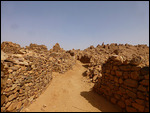
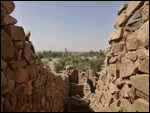
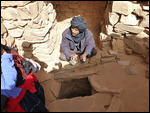

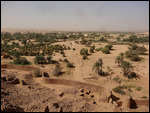
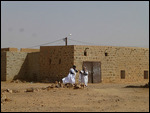


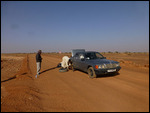

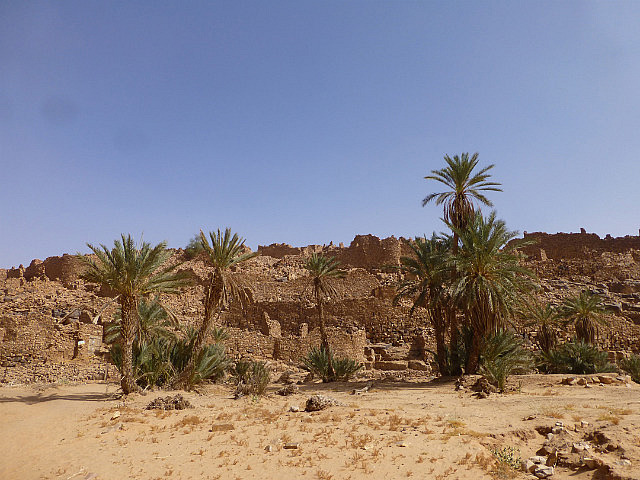
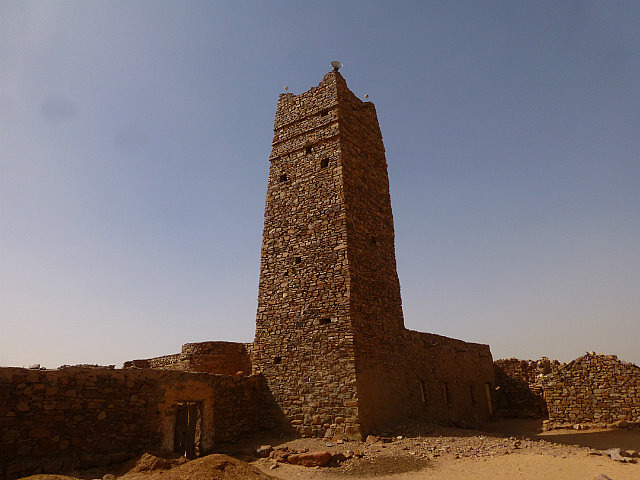

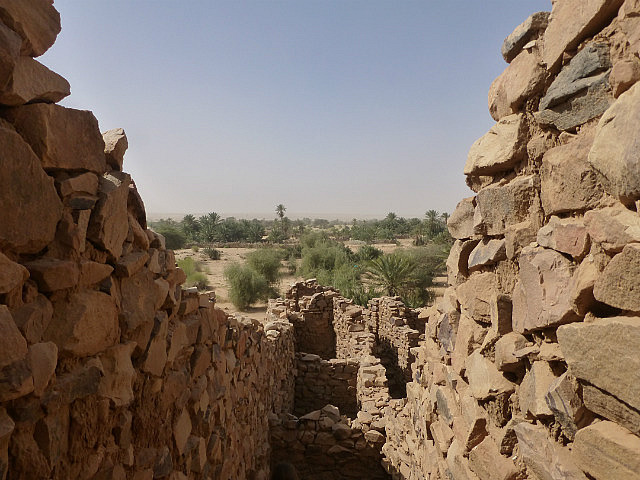
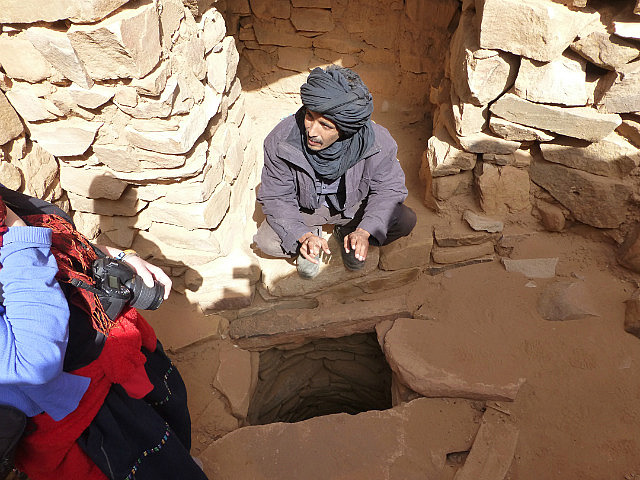


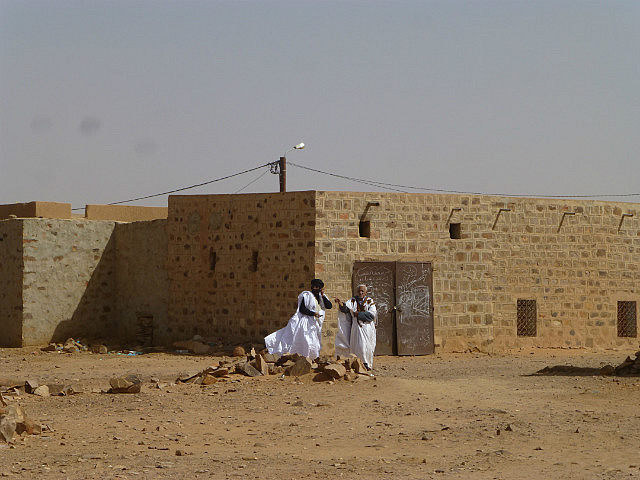


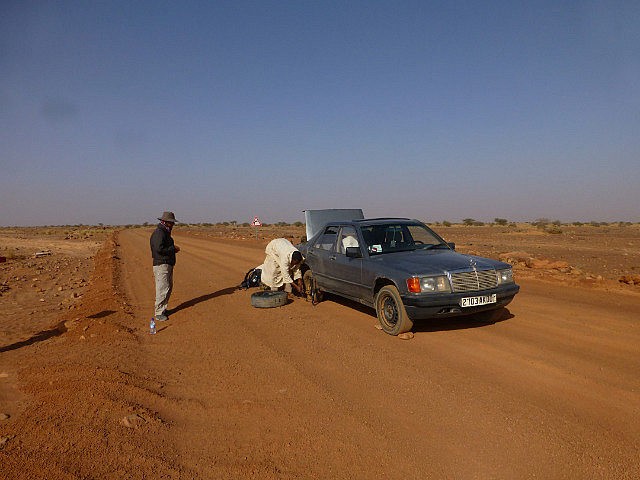
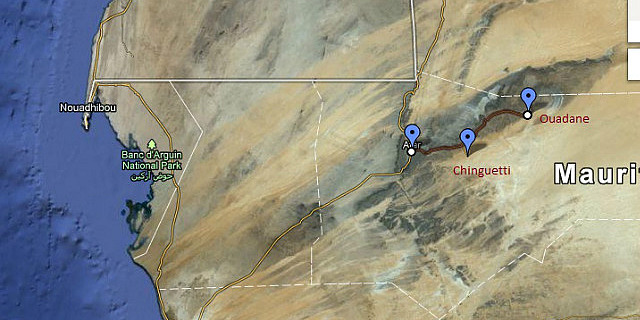
Comments